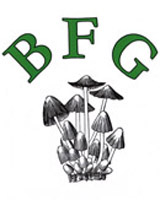K
|
|
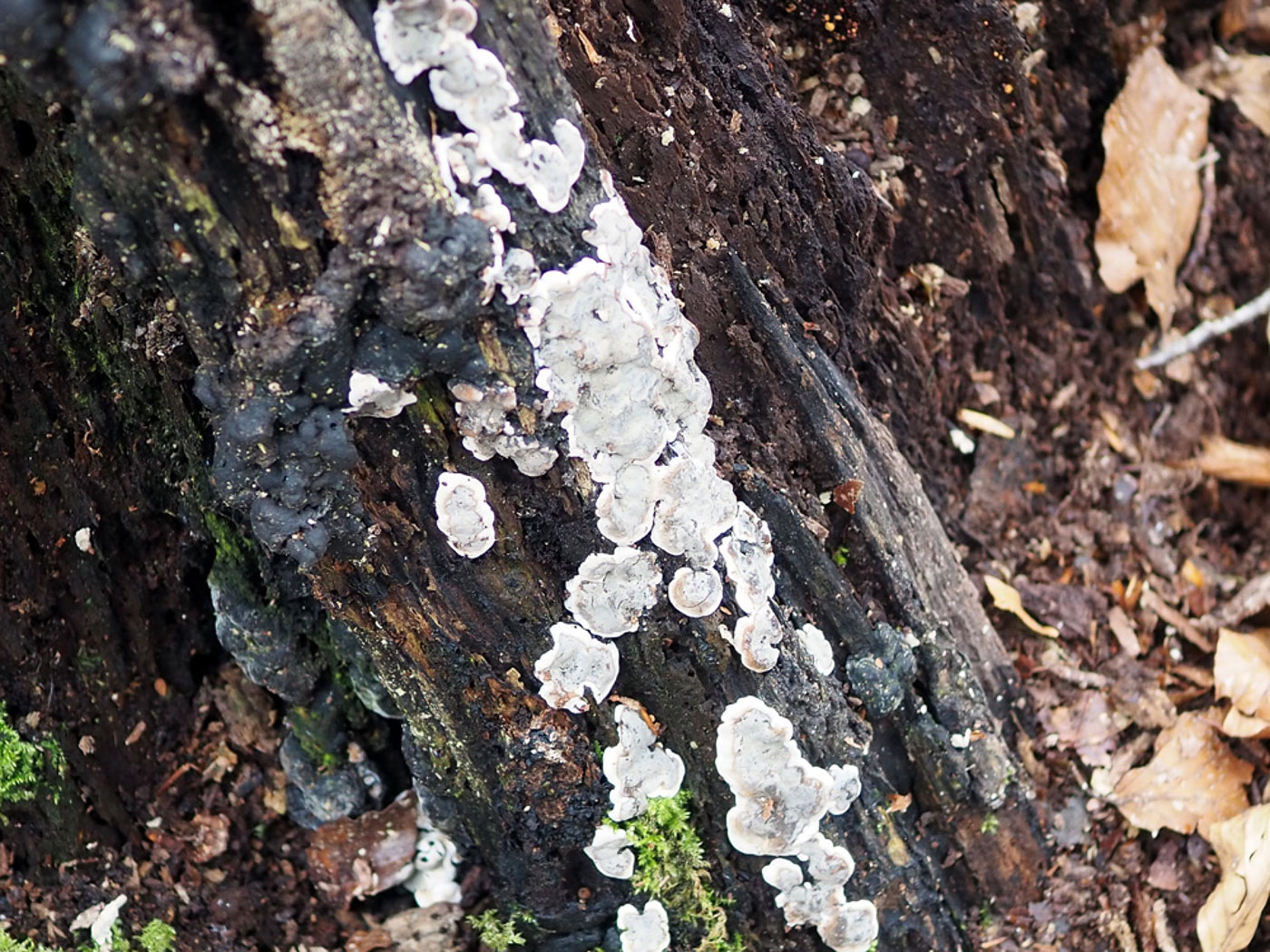
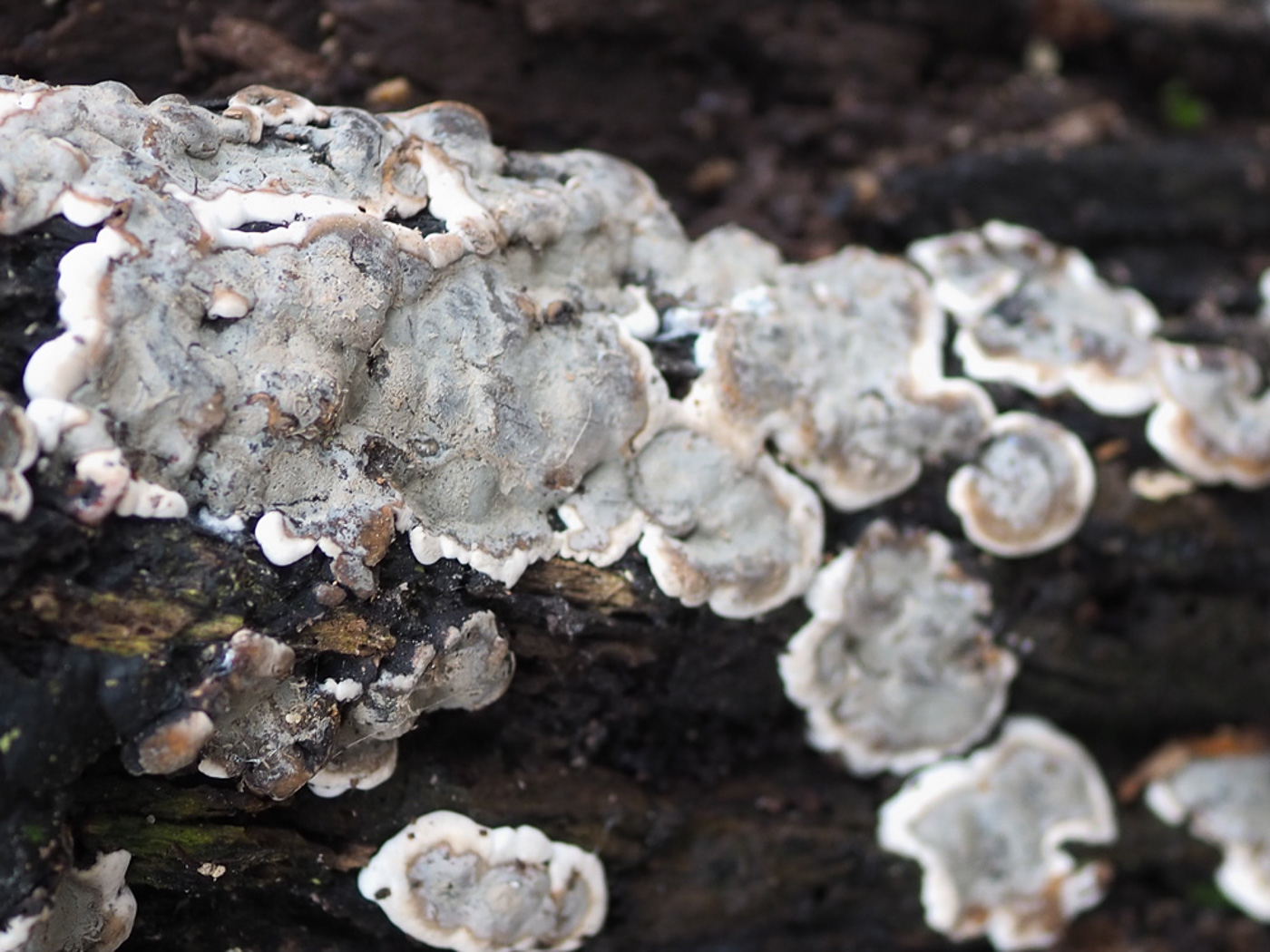
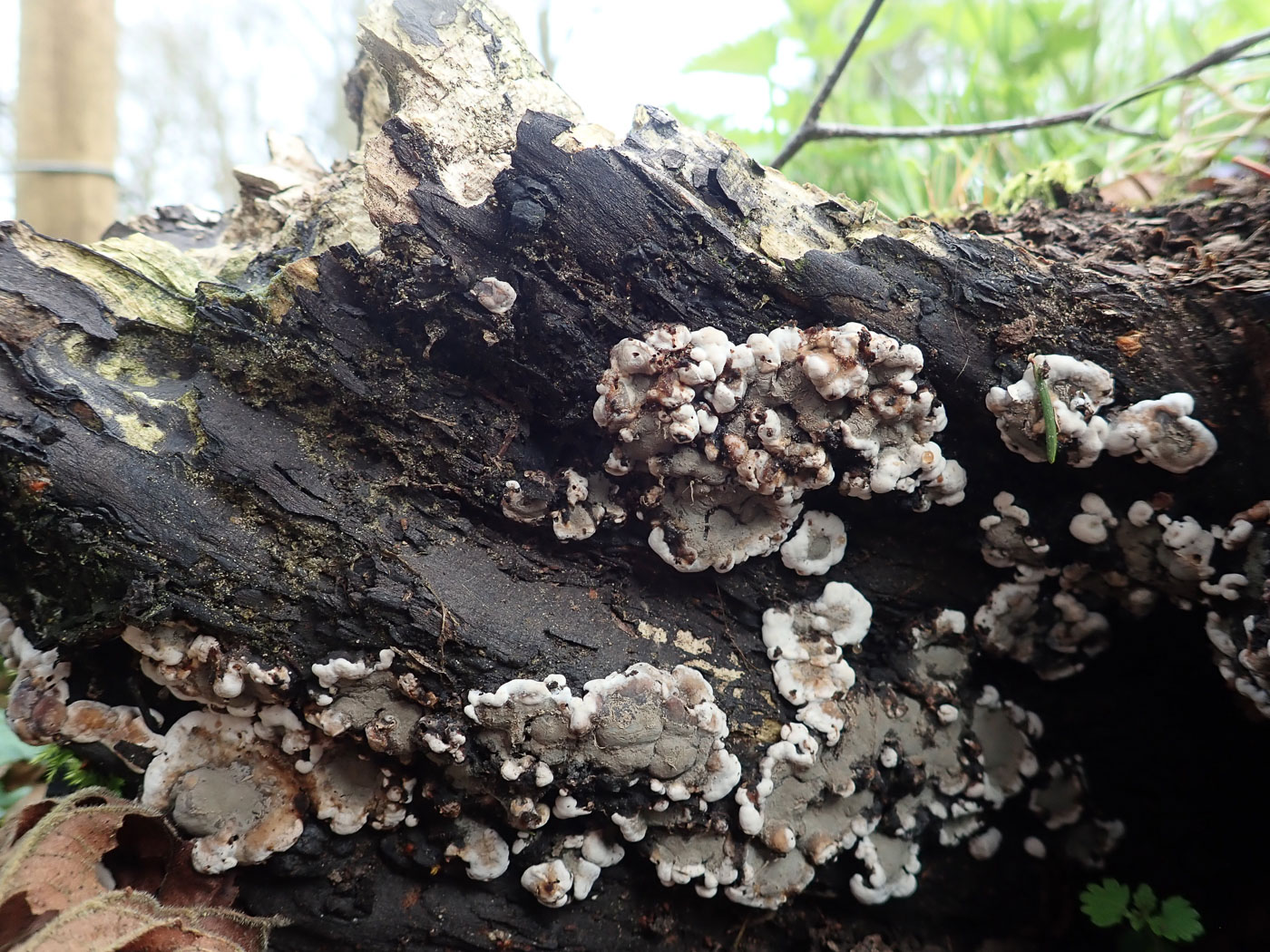
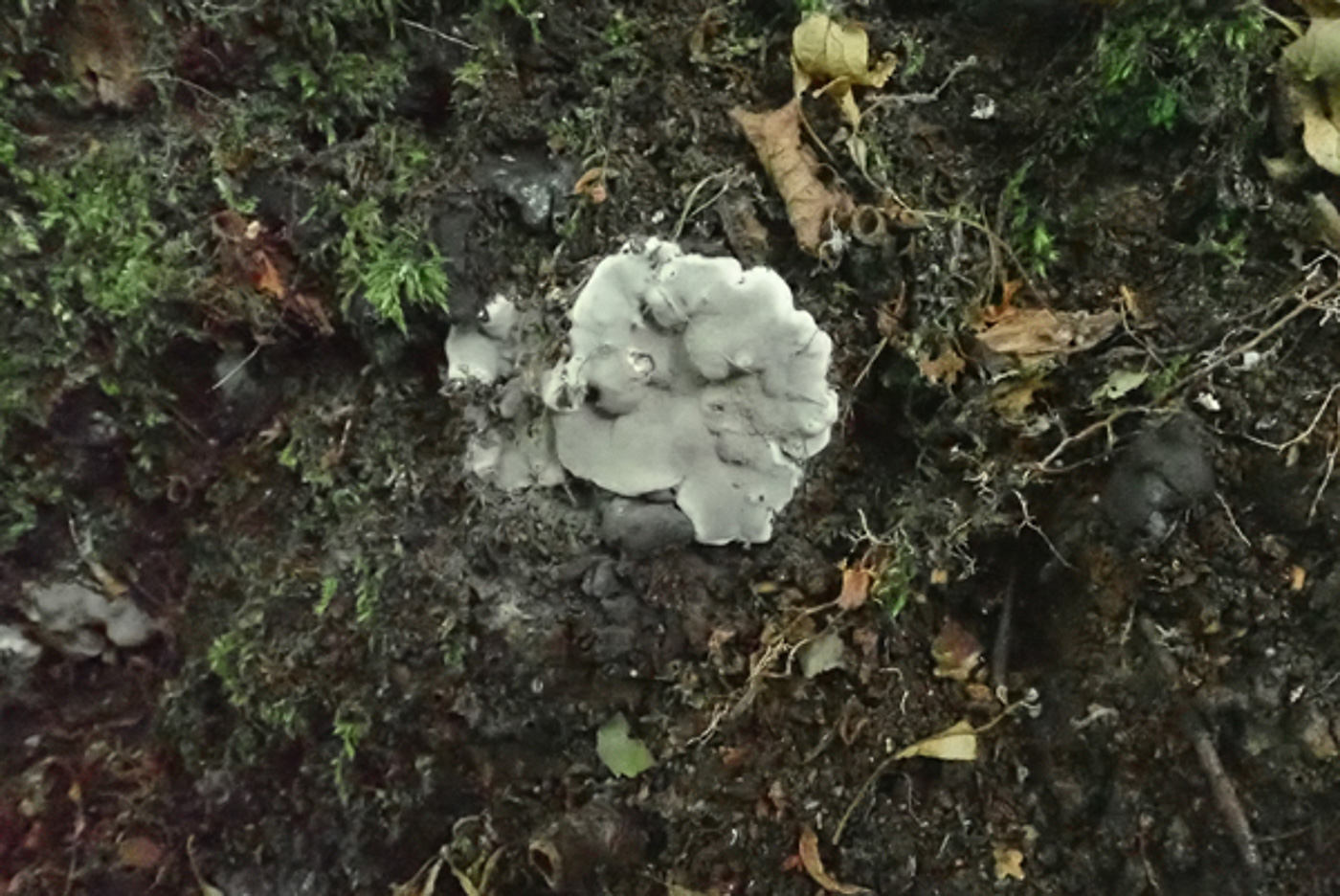
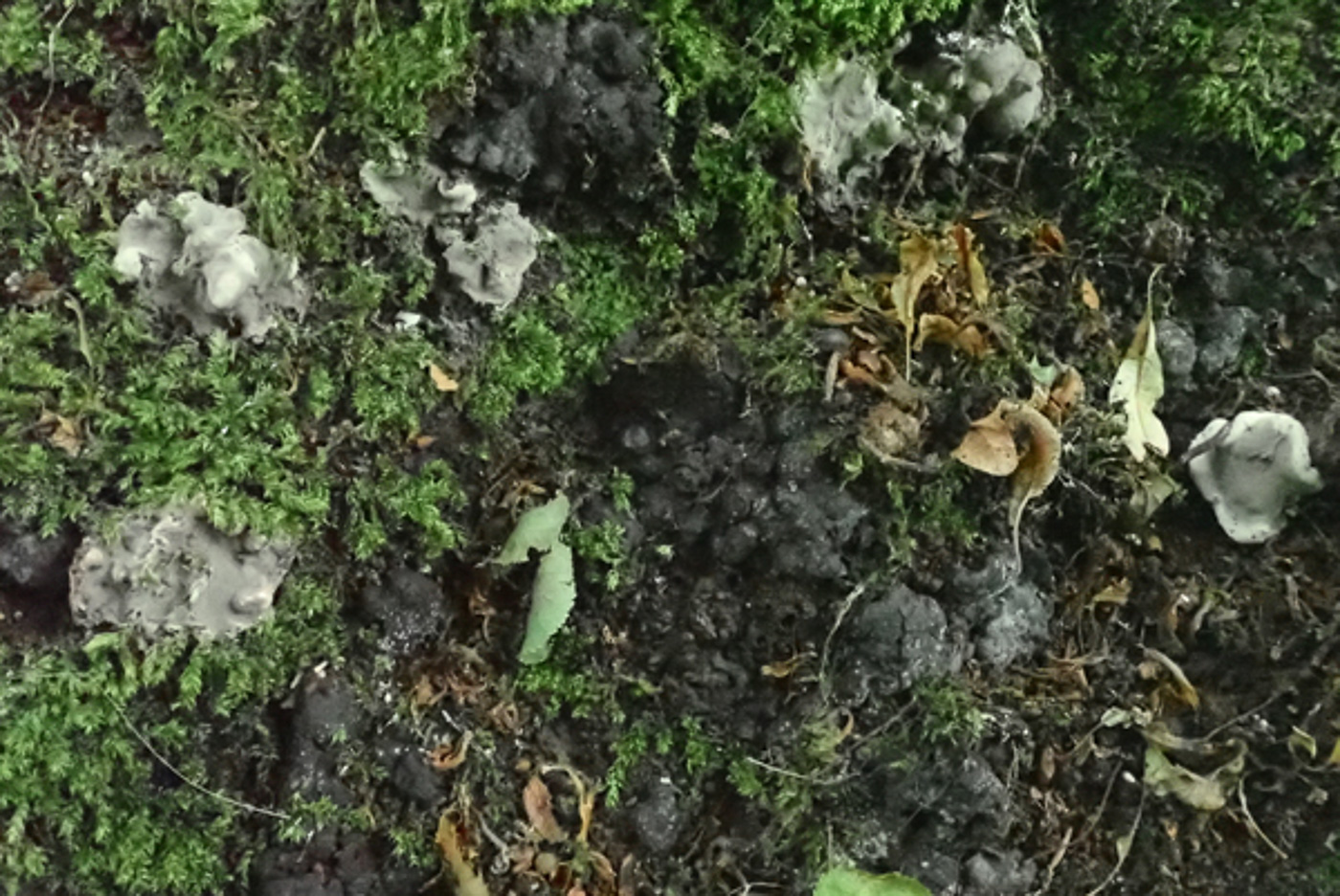
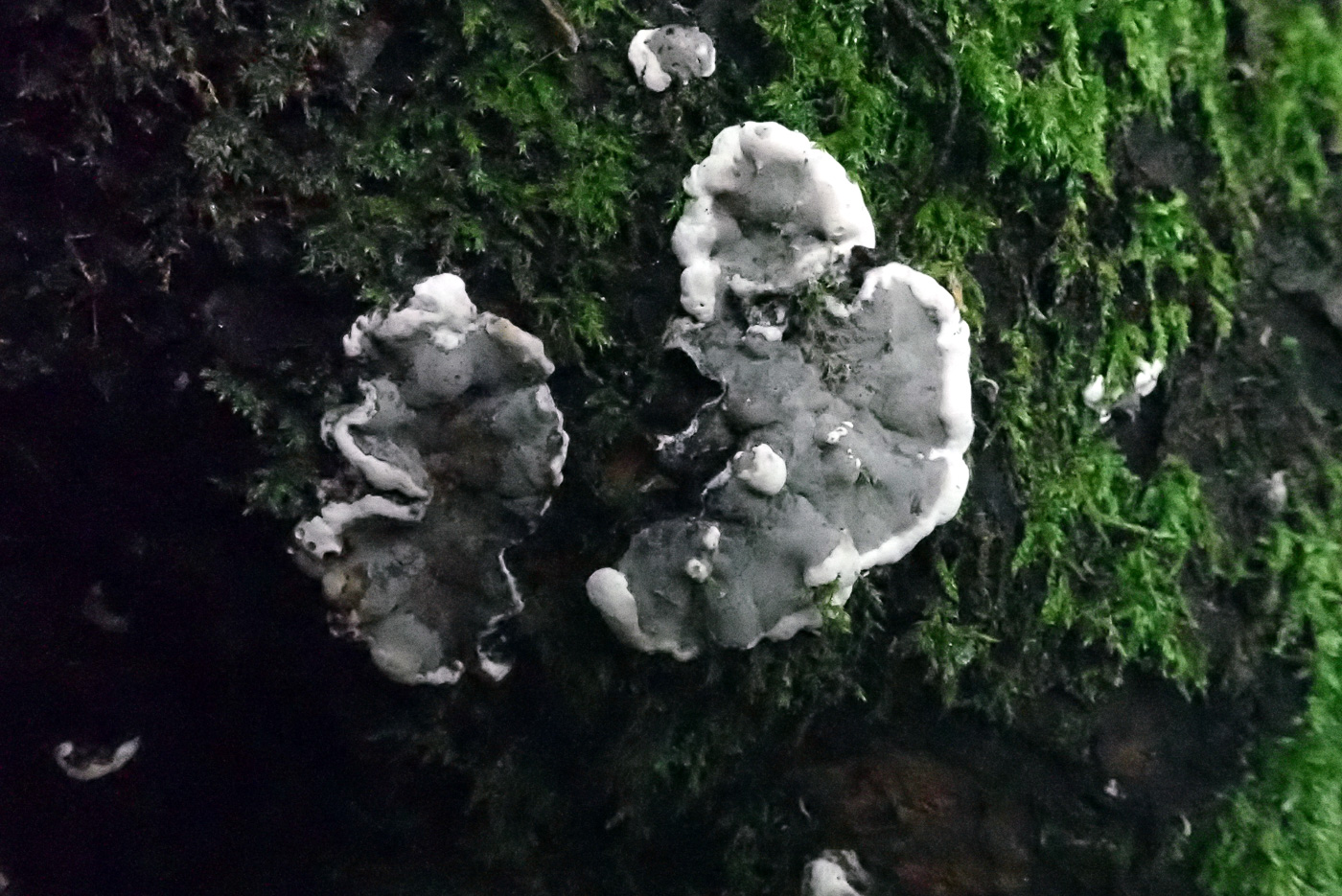
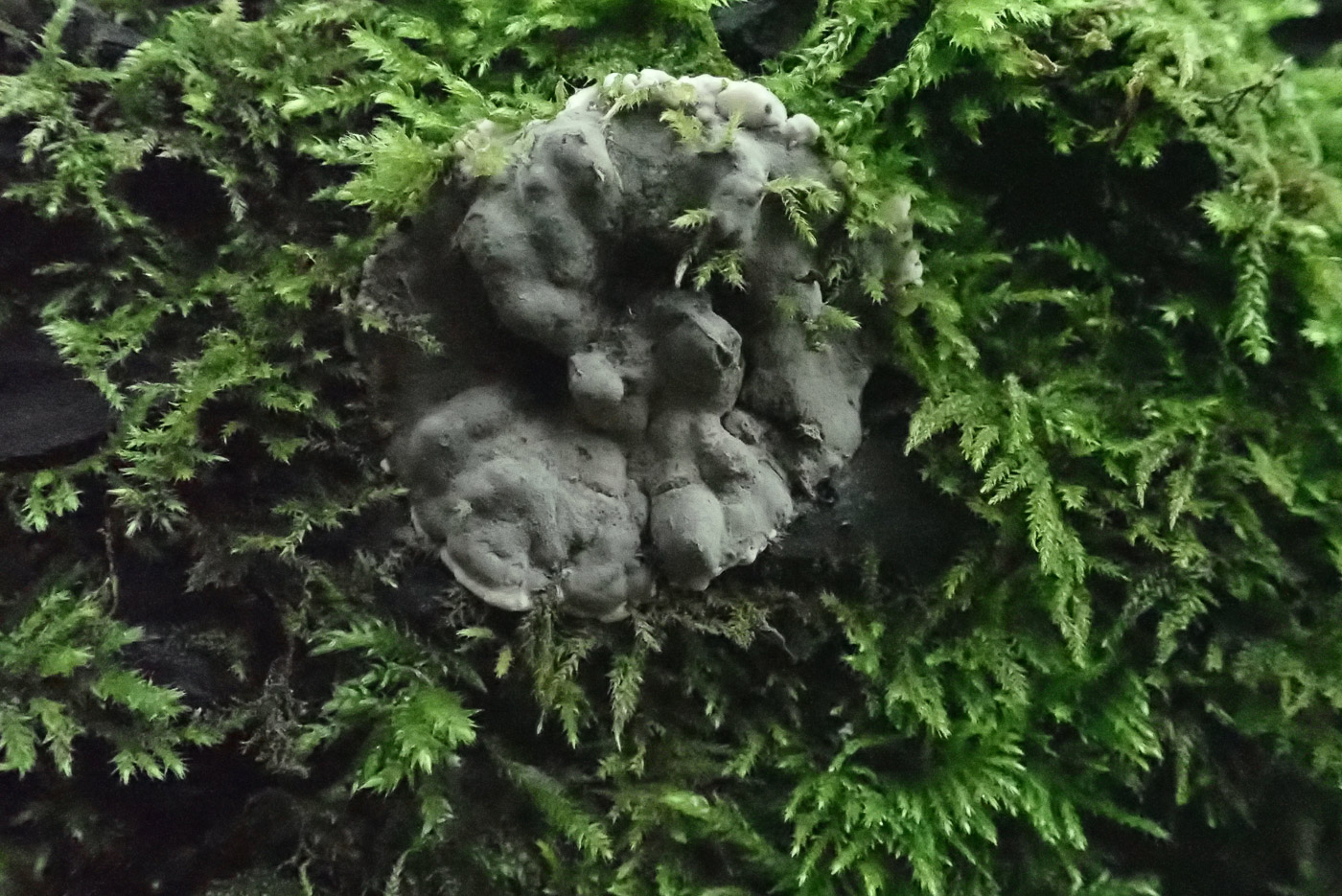 |
Kretzschmaria deusta (Brittle Cinder)
Mar 9, 2024. On a rotten unidentified stump in Tinkers Wood John Catterson noticed this Pyrenomycete fungus - common though often overlooked - showing both fresh and old specimens. In photo 1 the old black hard crusty lumps can be seen alongside the fresh softer grey patches with white edges which can be seen close up in photo 2. This is likely to have been on Beech which is its favoured host wood. (There can't be many Latin genus names which boast six consecutive consonants!)
Apr 5, 2023. At Turville Heath on the base of a rotting deciduous stump Penny noticed this Pyrenomycete species, one that when fresh as here produces grey bumpy rather erratic areas with a white fringe, sometimes covering quite a wide area. It later looses these colours and become somewhat crumbly and black when much harder to recognise. This is a common species.
Jun 13, 2022. On the base of a Lime trunk at Turville Heath Penny noticed some pale grey lumpy patches having white edges and recognised this species of Pyrenomycete Asco, belonging to the Xylariaceae. When fresh as here it is an easy one to spot, but as it matures it becomes black, crusty and even lumpier and is easily missed. Both fresh and mature patches are visible in photo 2. It is quite common and usually on Beech and at this grey stage in early summer.
Jun 21, 2021. At Turville Heath Penny found several trunks with good examples of this quite common Ascomycete just developing - photo 1 is on Small-leaved Lime, photo 2 is on Oak. At this early conidial stage it typically forms these rather uneven bumpy grey patches with a white rim and later becomes crusty and entirely black, like several other Pyrenomycete species. It is possibly better known by its earlier genus name Ustulina.
|
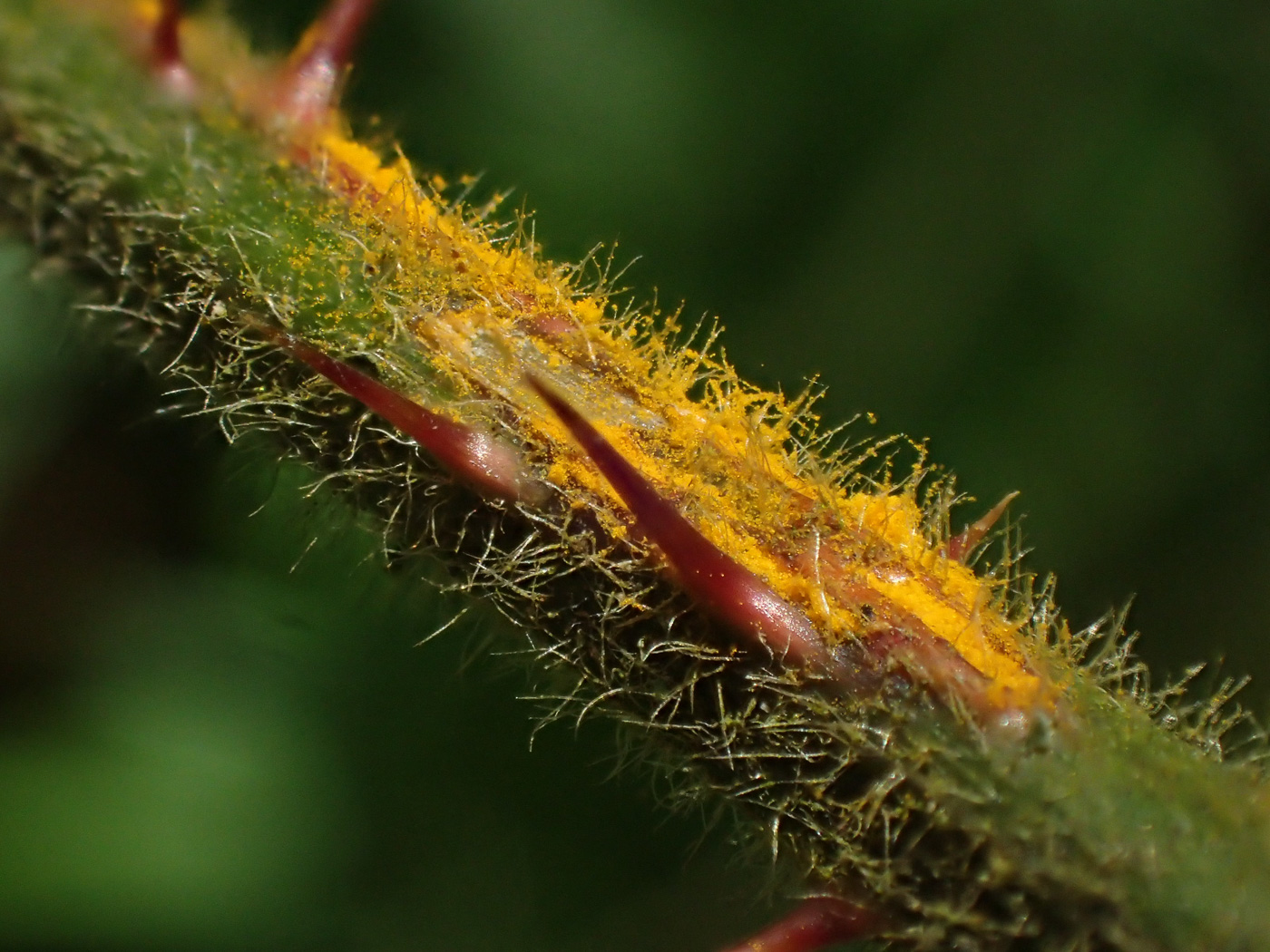
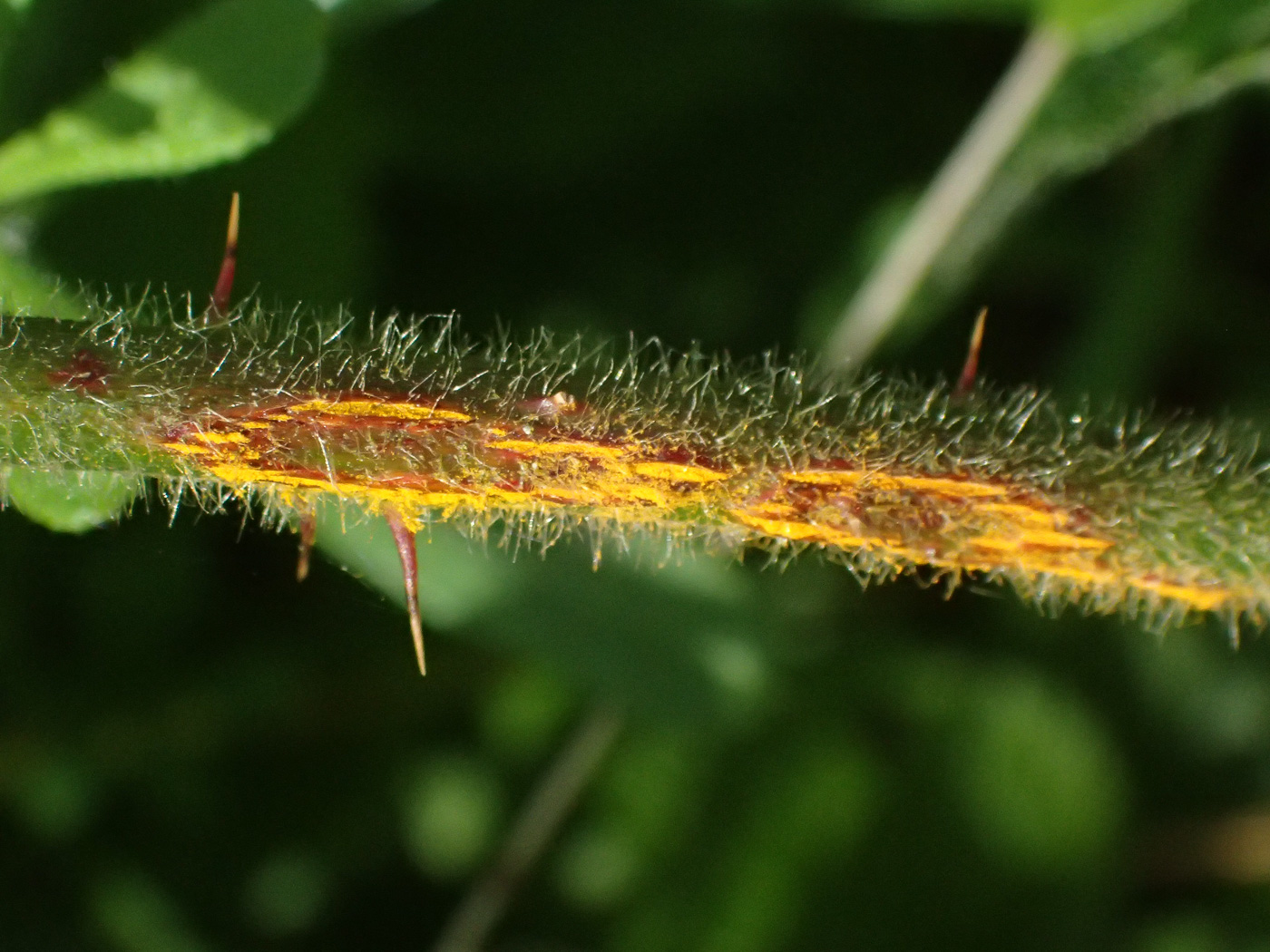 |
Kuehneola uredinis (Pale Bramble Rust)
Apr 18, 2024. At Dancersend Sarah Ebdon noticed this distinctive Rust species on living Bramble stems. This is a very common Rust affecting only Bramble and forming lines of rusty orange 'dust' along the stems in Spring. Many rusts go through two or more stages, using a different host plant for each stage, but this one stays entirely on one host plant. This appears to be a new entry for Finds.
|
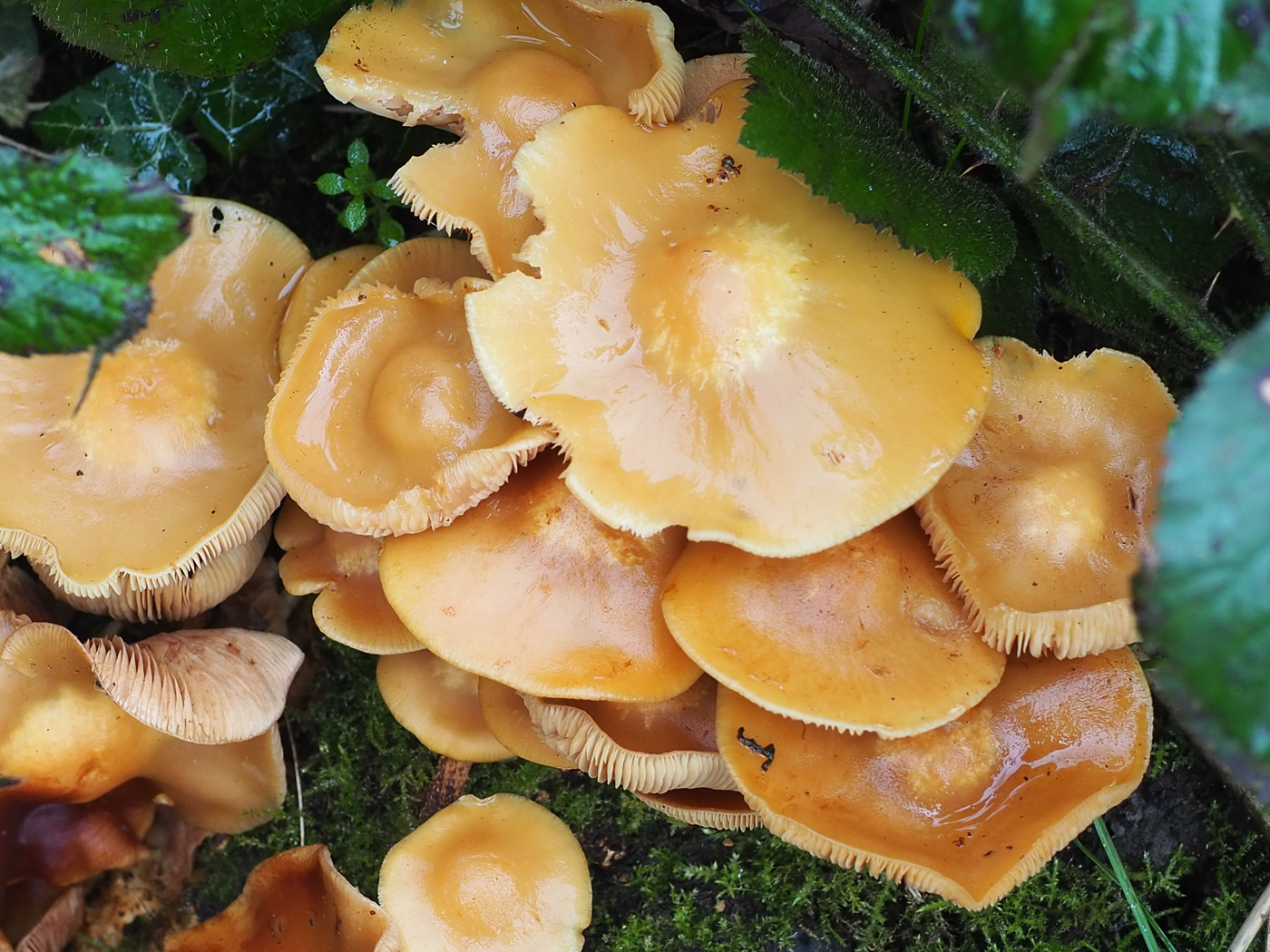
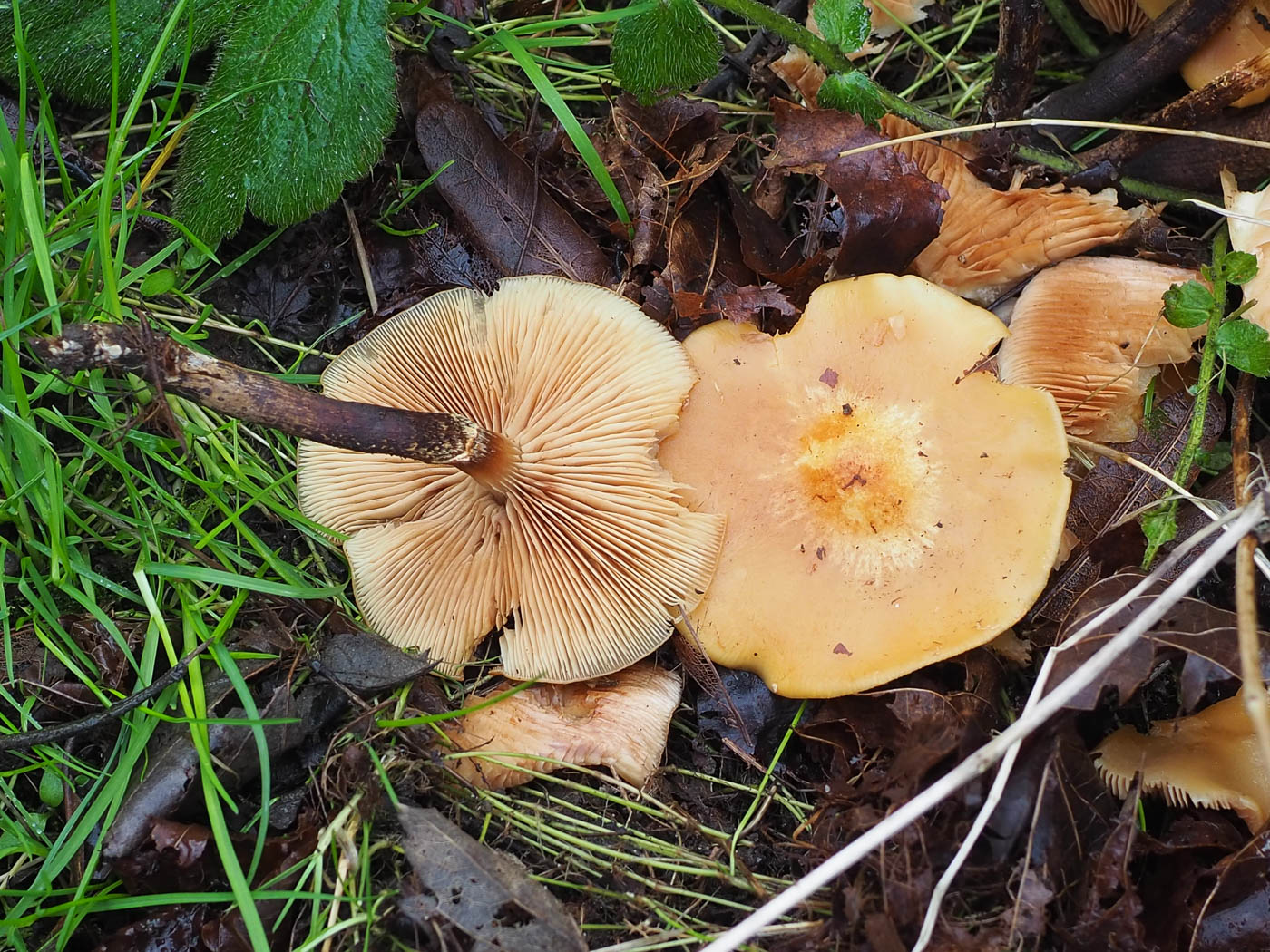
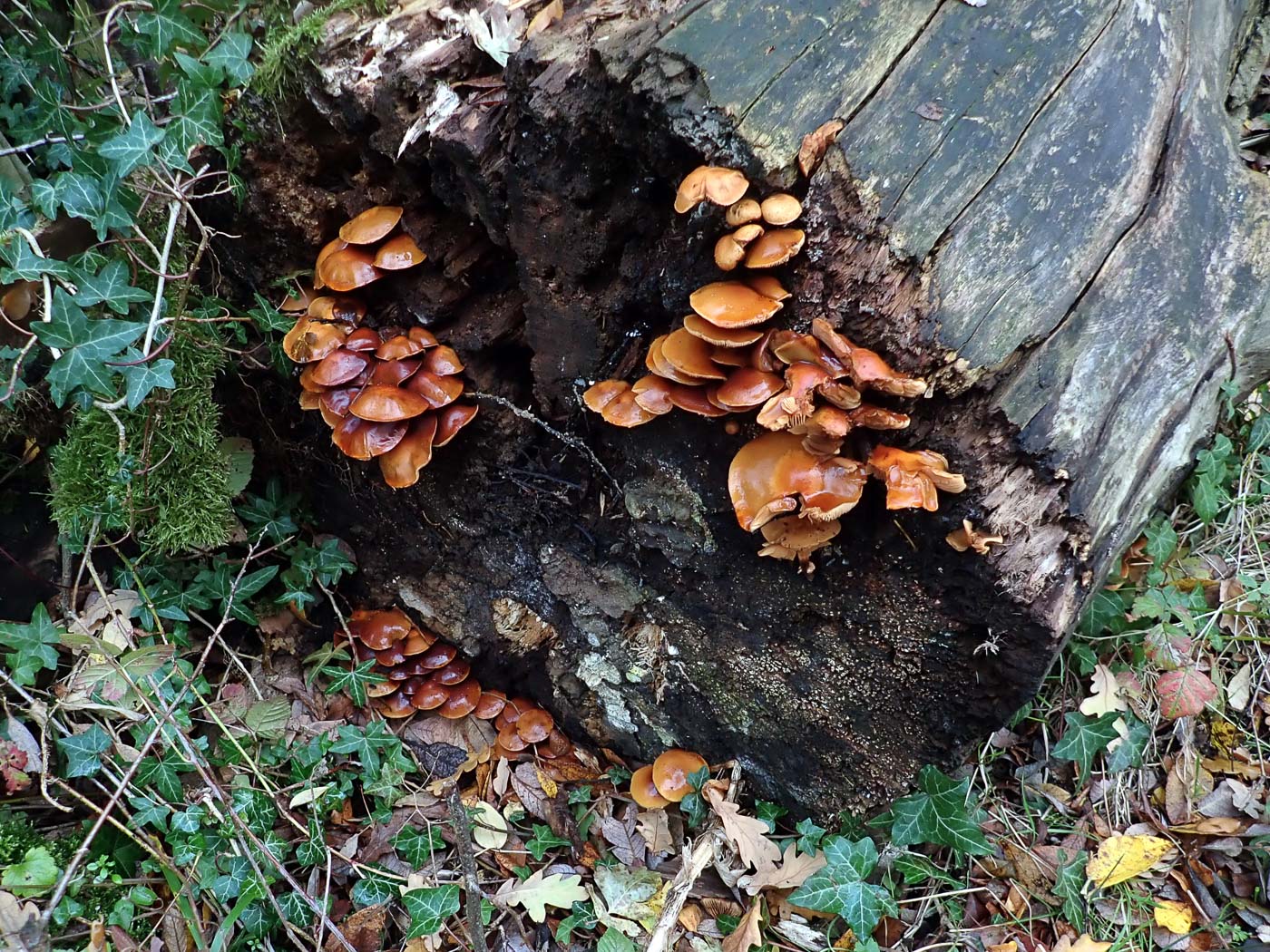
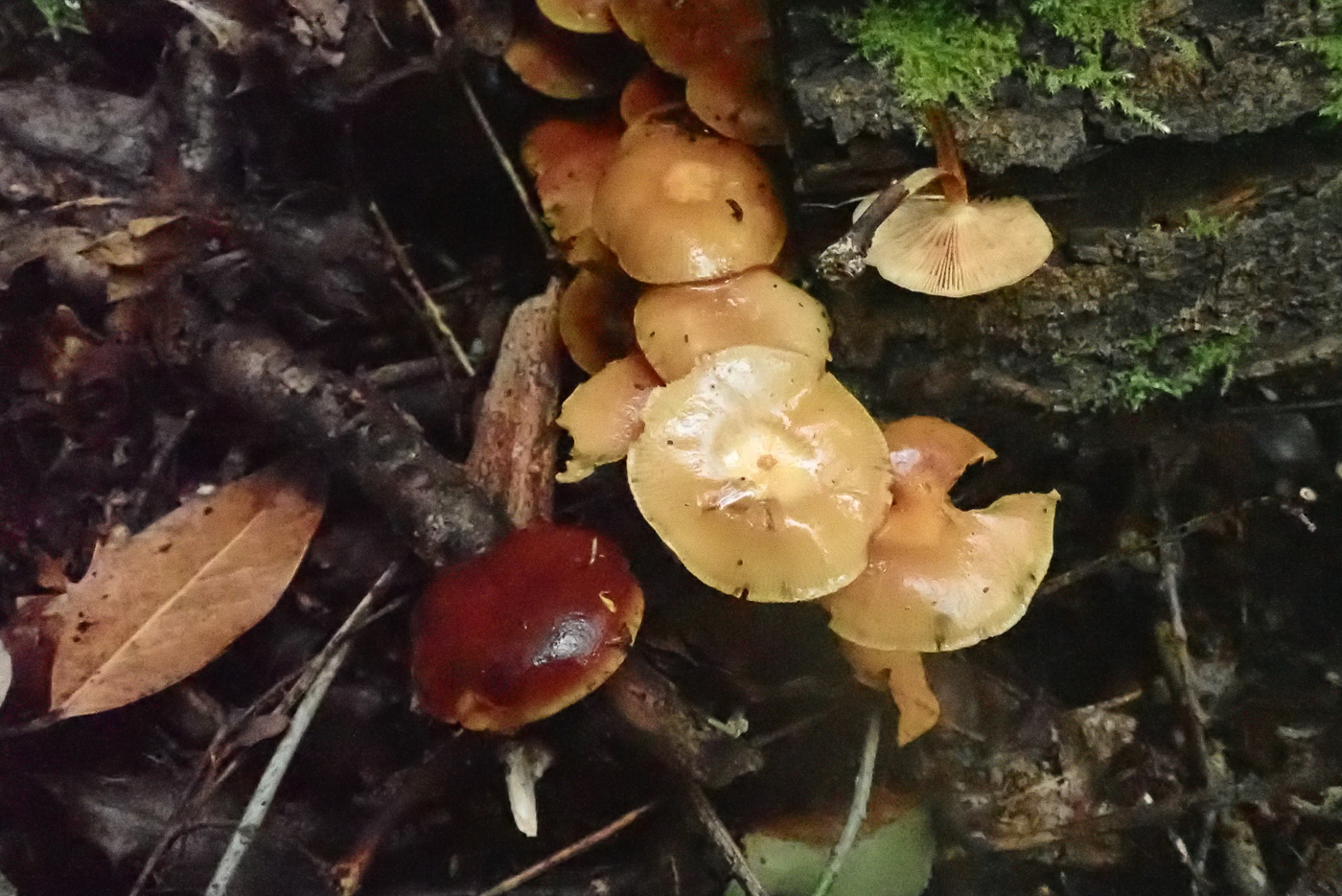
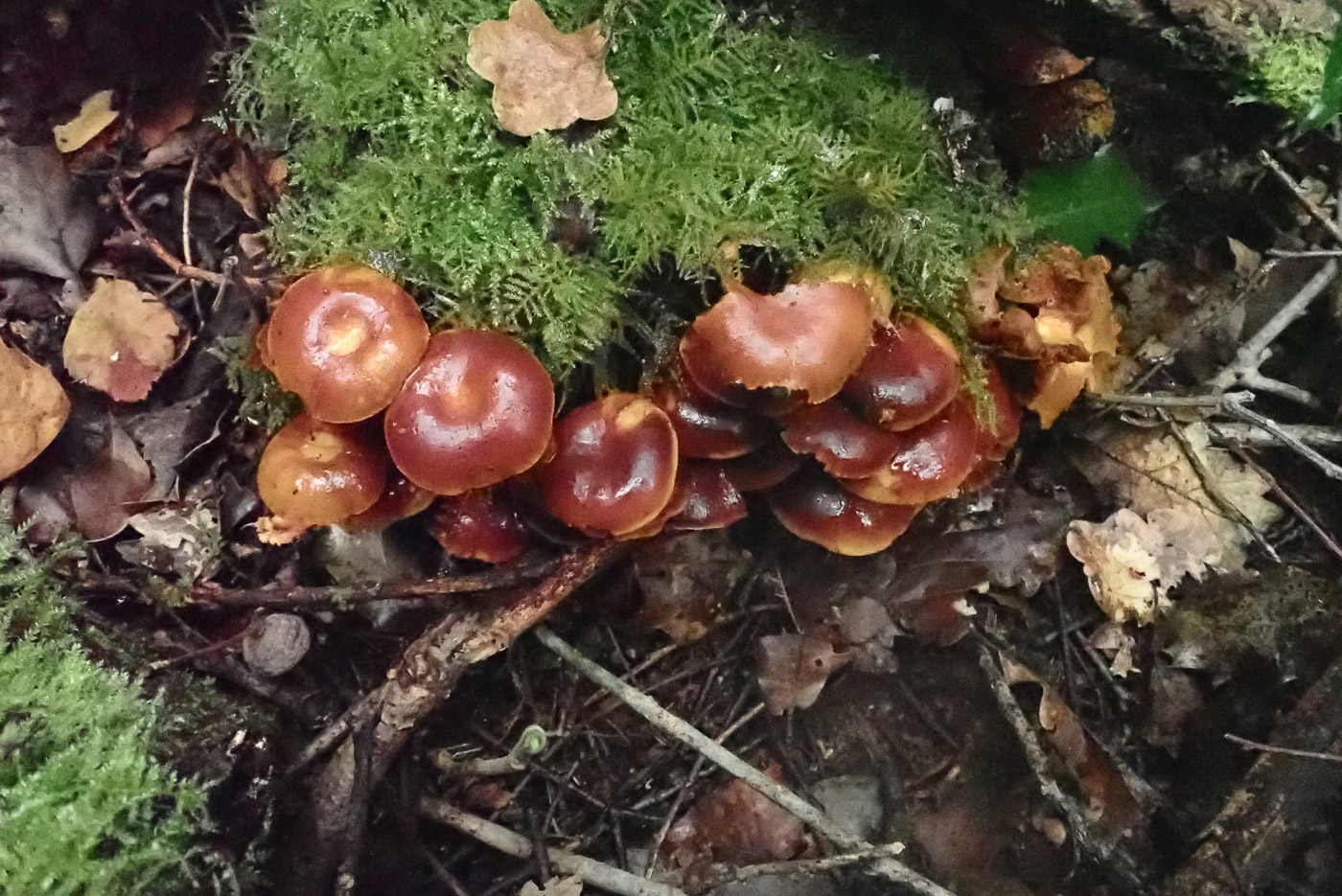
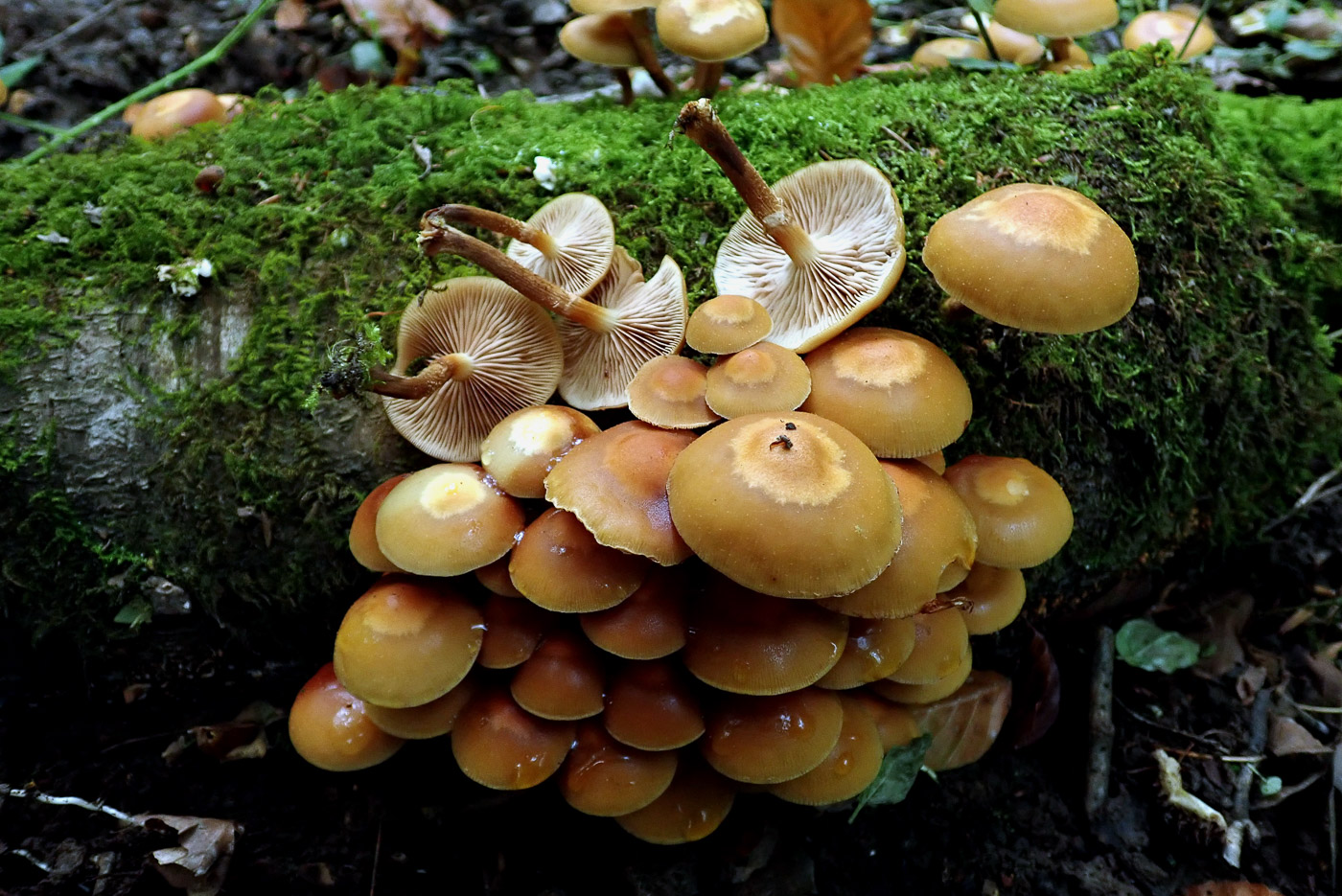
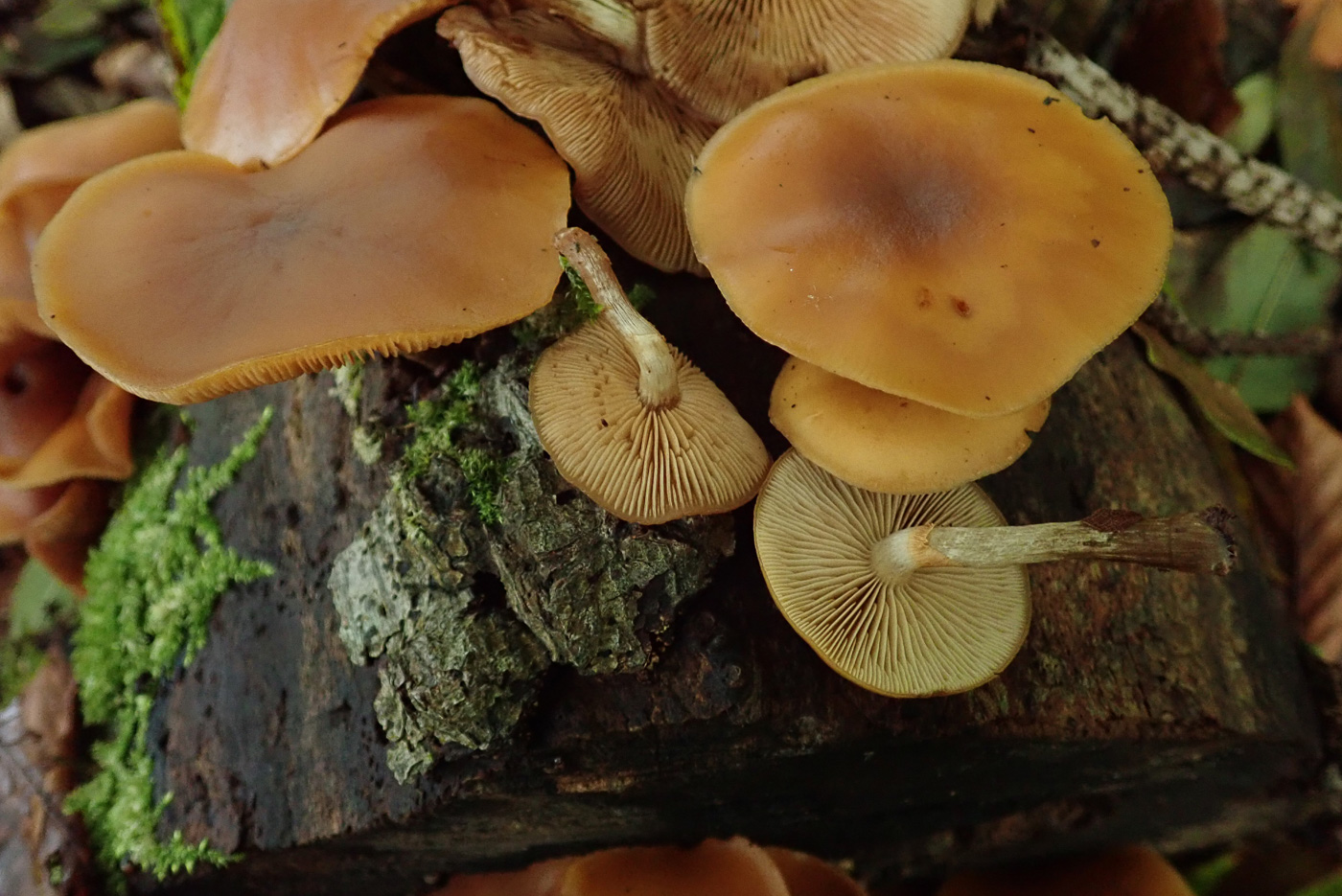
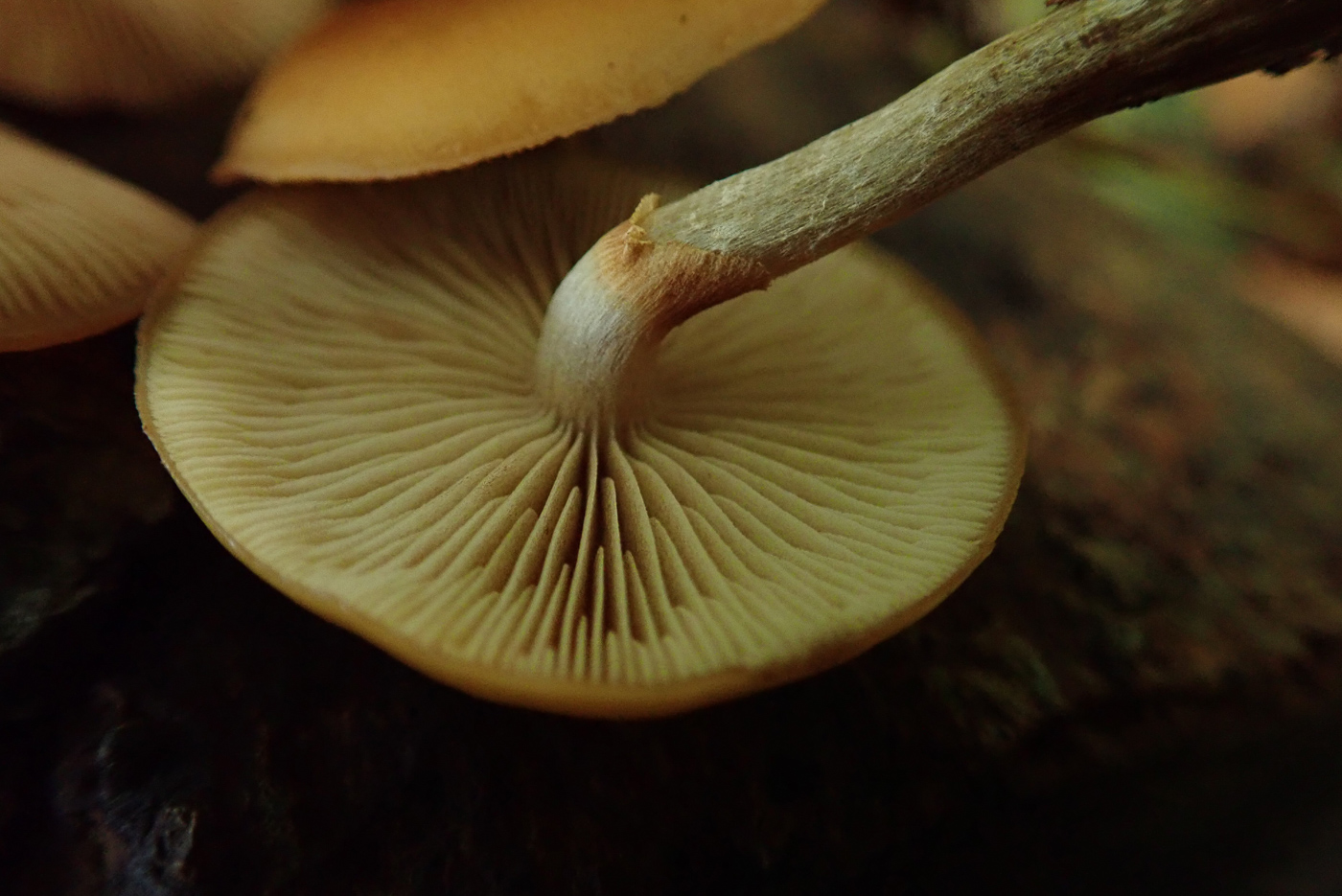 |
Kuehneromyces mutabilis (Sheathed Woodtuft) 
Mar 5, 2024. In Wycombe Rye John Catterson noticed and recognised this tight cluster of mushrooms flourishing on an old stump. A familiar sight on fallen wood in the autumn, this clumping species is not that usual to find at this time - we have no March records though several for April and May - but here is displaying the typical fading which occurs in the cap centre, often giving a 'two-tone' effect, together with the ringed stem and pale gills visible in photo 2.
Dec 3, 2022. On the end of a large deciduous log at Weston Turville Reservoir Penny found this large fruiting of a common clustering wood-inhabiting species - one that can be confused with Galerina marginata (Funeral Bell) which occurs in similar form fallen wood though has larger distinctly ornamented spores. The caps of today's species are strongly hygrophanous, often giving a two-tone effect with much paler centre (just visible in the top left-hand specimen in photo 1) which also helps to separate the two species in the field.
Jul 28, 2021. Near the Mire in Burnham Beeches Bob Simpson found several clusters of this somewhat variable species on a pile of fallen deciduous wood. The caps were about 3 cms across but varied in colour from milky coffee to rich reddish brown, appearing like two different species. Often both colours appear on one cap (hence a previous common name, Two-tone Pholiota and its Latin species name meaning changeable). It has a ring on the stem and later in the year is easy to confuse with the very poisonous Galerina marginata (Funeral Bell) - that species also clusters on fallen wood but fruits much later in the season. (The photos are Penny's.)
Sep 16, 2020. This typical dense cluster was found growing on fallen deciduous wood in Penn Wood by Penny Cullington. An attractive species, it quickly develops the two-tone effect with a paler central zone as it dries out - a key character. That together with the stem having a ring zone and the clustered habit on deciduous wood make it quite an easy species to recognise. (It is in fact close to the genus Galerina and not the genus Pholiota, hence its relatively new common name, though it seems a shame not to have retained the descriptive 'Two-tone' in the name.) Photo 2 and 3, taken exactly a month later at Pulpit Hill, show fruit bodies in damp conditions before the two-tone effect has developed, also detail of the ring zone on the stem.
|

